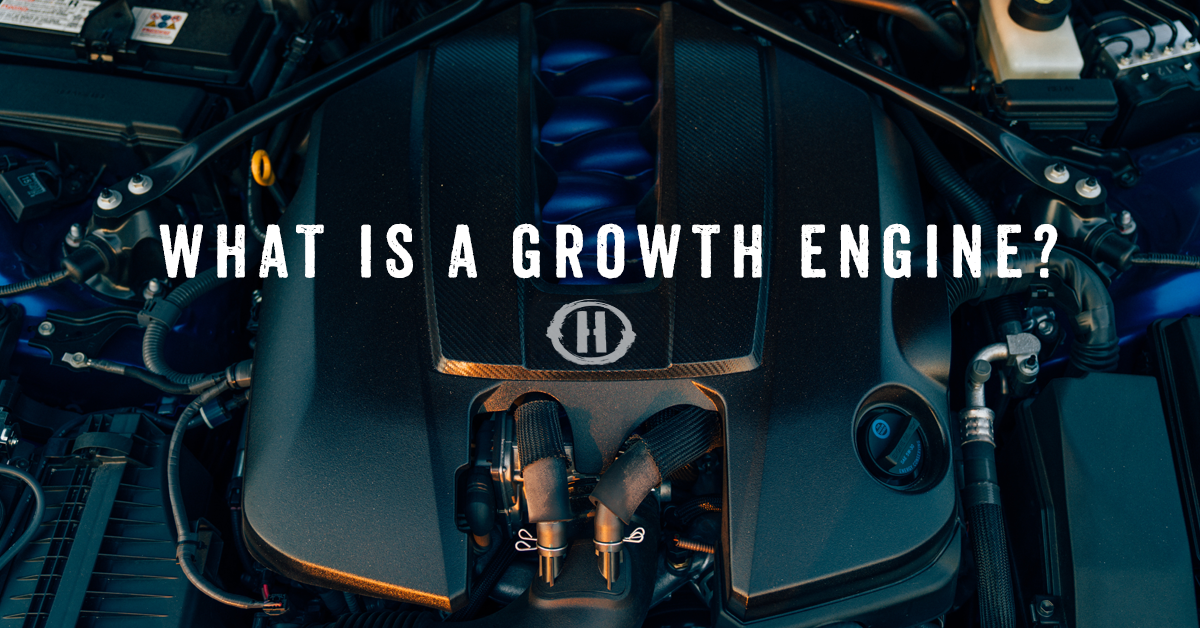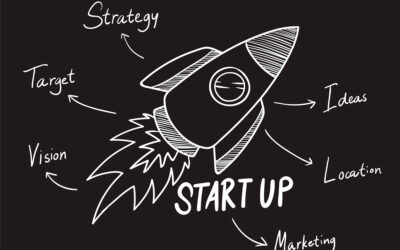Just what the heck is a growth engine anyway? Where do you find them? How are they different from marketing solutions you can buy off the shelf? What exactly does the term Growth Engine mean? In this post we’ll cover the gist, key components, to help you filter out the noisy gimmicks and identify solutions that work.
From the Heroik perspective, a growth engine is a strategic activity system designed to give your business a sustainable competitive advantage.
There are 3 key concepts that distinguish a growth engine from the gimmicks and snake oil. They are as follows:
1. A Strategic System
Unlike the one-trick tactical ponies that make up most of the solutions in the marketplace, A strategic system looks at:
- key activities that are connected and reinforce one another
- are difficult to reverse engineer
- distinguish your offering in the marketplace, thus giving you a competitive advantage.
The tactical tools that you and your competitors can buy and deploy tomorrow are not really systems – they’re tactical tools. The tactical tools are so addicting to seek out as they are almost always positioned as some magical set of turn-key, cheats, hacks, and workarounds. Most often they’re gimmicks designed to separate you from your wallet. And when I say most often, I mean 90%+ of the time these “hacks” and “easy buttons” amount to mere high tech snake oil that never performs as advertised.
Growth Engines give you lasting strategic systems that give you a competitive edge.
2. Designed For Your Business
A true growth engine is designed to perform with precision relative to achieve specific goals and objectives with relative precision. All too often, business case studies amount to declaring serendipitous outcomes as intentional victories, reflective of some strategy. Strategic design creates a path for people and process to cohesively perform together.
In order for a complex system to be a fit for your business, it must be customized and personalized to the dynamics of your organization. This requires your collaboration and hard work, and by definition, cannot really be plug and play.
The plug and play business model depends on providers achieving large-scale sales, which requires their products to fit a broad group. This usually requires offering a generic feature set, or if the provider is successful, it becomes the generic standard. In either case, if used as prescribed, at best, you’re adopting generic activities and keeping up with the Jones’. And while it may bring you operational competency and/or efficiency, these gains are most often marginal and temporary.
Plug and play feature set brings with it, a programmatic bias of culture, attitude, and strategy. It often goes unnoticed but common tools often steer strategic thinking and planning. Microsoft has this down to an art form. This is why technology companies like to partner with schools, to set the standards for industry solutions. This isn’t necessarily in your best interest.
It’s essential to know when, where and why you’re seeking to be competitively competent, operationally efficient, and where you are really seeking to develop something that brings higher yields in the way that a strategic growth engine does. You probably already know or are at least minutely aware of your differentiating activities, but might not know how to leverage them in a strategic system to propel growth. That’s why you need to start a growth engine initiative. Even conceptually pursuing one can help you avoid much of the snake oil in the market, and focus your thinking.
3. Sustainable Competitive Advantage
If you spend months searching for a solution that only gives you a competitive edge for mere days before your competitors copy it, how does that help your ROI? It doesn’t, and almost no one is doing the math on that. Why? because shopping for solutions is the fun part, right? Making the systems and gizmos actually work for your business, well, that requires, real, work. Most people are avoiding the work, and churning through the hopium of turnkey, and coming up short, even when the business is on the line.
Generic turnkey systems that steer the positioning of the company make it difficult to differentiate one business from another.
You can have any color you want, so long as it’s black.
The old Ford adage is even more relevant today. Buying more of the same will not differentiate you, or yield you a sustainable edge. Yet most solutions are designed to be sold as vanilla for the masses.
- They are designed to sell and scale to the masses, to be a fit for everyone – which is the opposite of a differentiator. Vanilla first and foremost. When the toppings are left to you, it’s not a strategic solution, and unless modified, there’s a good chance that the ROI will be marginal. SaaS vendors work only as hard as they need to…
- They are often tactical not strategic – leveraging their simplicity and convenience, giving you a band-aid and a patch, while limiting their use and lifespan.
- They are unsustainable.
So, a Heroik Growth Engine is a strategic system, purposefully designed to give you a long-term, sustainable edge in your market.
3 Things You Can Do Right Now With This Information
- Sharpen your business goals and remind yourself what you really want → You want a SUSTAINABLE, COMPETITIVE ADVANTAGE.
That’s what you want – an edge that lasts longer than a day. You want an edge that leaves competitors in the dust for 3, 5, or even 10 years, NOT days!
- You need to start with a better blueprint and a smarter shopping list.
You are statistically far more likely to spend more money when you shop at a store without a list. The same thing happens when you’re shopping for systems and solutions for a business.
The components of a growth engine involve a mixture of solutions in the market and internal activities that need to be developed in the organization in order to be assembled and wielded as a growth engine.
It’s time to get some dirt on those Carharts again and do the work. Real work makes you move and sweat. It may even leave you with blisters, but it also moves you, changes you, advances your condition and the condition of the business. That rewarding feeling you get from doing it, that charges you for more, is exactly why the real work needs to be baked into your planning. Your growth will depend on your ability to connect with that sense of pride throughout the course such transformational work.
- Give up the deadly addiction to unicorn hunting – searching for that one easy button that actually works, while avoiding workable solutions. It’s time to commit to doing the transformational work you and your business deserve. This is the toughest part and one of the major executive and managerial time wasters I see with my clients.
There is a vast business graveyard full of people addicted to the search for the holy grail of turnkey solutions and quick fixes. These solutions, in the rare event they actually work, don’t stay secret for long. And your competitors find them too and you’re back to square one.
Think of it like your building a fort. Having all the necessary tools and supplies is one thing, knowing how to put everything together is a different skill altogether. You need both. For many, it’s more fun to shop at Home Depot than to build things. And that needs to change.





0 Comments